Tunisian Tuna Fricassé
Fricassee–or fricassée in French–is an old dish. In 1953’s Duck, Rabbit, Duck! Bugs Bunny told Elmer Fudd that the confused hunter couldn’t shoot Bugs for rabbit stew because Bugs was a “fricasseeing rabbit.” Chicken Fricassee was a favorite comfort food of Abraham Lincoln‘s, reminding him of happier times in his childhood. Fricassee references in US newspapers go all the way back to the early 19th Century, but entered the English language hundreds of years earlier, from the French, in which language the word was first printed in 1490. The etymology seems to indicate that fricassee combines the words for frying, and for breaking into pieces. In fact the dish that this word normally references consists of pieces of meat fried and then stewed in a sauce.
Which would be a stretch even for our extraordinarily inclusive ideas about what counts as a sandwich. However, that traditional French dish called fricassée is not the subject of this piece. Instead, we are speaking of the Fricassé sandwich as served in Tunisia. (Incidentally, there is also a spicy pork-and-hominy Bolivian soup called Fricasé. I won’t be covering it in this piece but after reading about it, it looks right up my alley and I’ll be trying it soon.) Though like the name of the stew, in English Fricassé is often simplified to Fricasee, confusing the issue further.
As with another Tunisian sandwich we’ve tried here at the Tribunal called Casse-Croûte, the Fricassé appears to be descended from the French Pan Bagnat, a kind of Salade Niçoise served in bread. As with that earlier sandwich, the Fricassé features tuna, harissa, hard-boiled eggs, black olives, cucumber, tomatoes, and potatoes. This sandwich, however, is served in smaller, oval-shaped bread rolls that are fried like donuts.
The commonly-told origin story, possibly apocryphal, goes like this: an 19th Century Jewish grandmother in Tunisia was expecting many guests for dinner and fried enough donuts to serve dessert to the whole party. Unfortunately, most or all of the guests called off at the last minute, leaving her with a serious surplus of fried bread. So she took that common set of Tunisian sandwich ingredients I mentioned–tuna, harissa, boiled eggs, potatoes, and salad–split open her donuts and made sandwiches. How they came to be called Fricassé I do not know. But Tunisia was a French “protectorate” from 1881 to 1956, and while its official language today is Arabic, French is still widely spoken. Fricassé comes from the French words for “fried” and “broken into pieces,” and these are fried breads full of little chopped up pieces of food. The dishes couldn’t be more different. But it makes a kind of sense.
The dish is popular across both Tunisia and Algeria, and has followed Tunisian Jews to Israel and elsewhere. It is served for special occasions such as Hanukkah, on which foods fried in oil are a tradition. There are many, many recipes for it online. For this post, I am following a recipe from Tunisian Jewish cookbook Ya Amna: From Djerba to Israel, a Tunisian Family Kitchen by Shoshana Cohen-Levran.
There are a lot of moving parts.
In addition to the fried bread, the tuna, hard-boiled eggs, black olives, and harissa, her recipe calls for a chopped salad made from tomatoes, cucumbers, onions, and parsley dressed with lemon juice and oil, minced preserved lemons, and diced boiled potatoes seasoned with harissa and caraway.
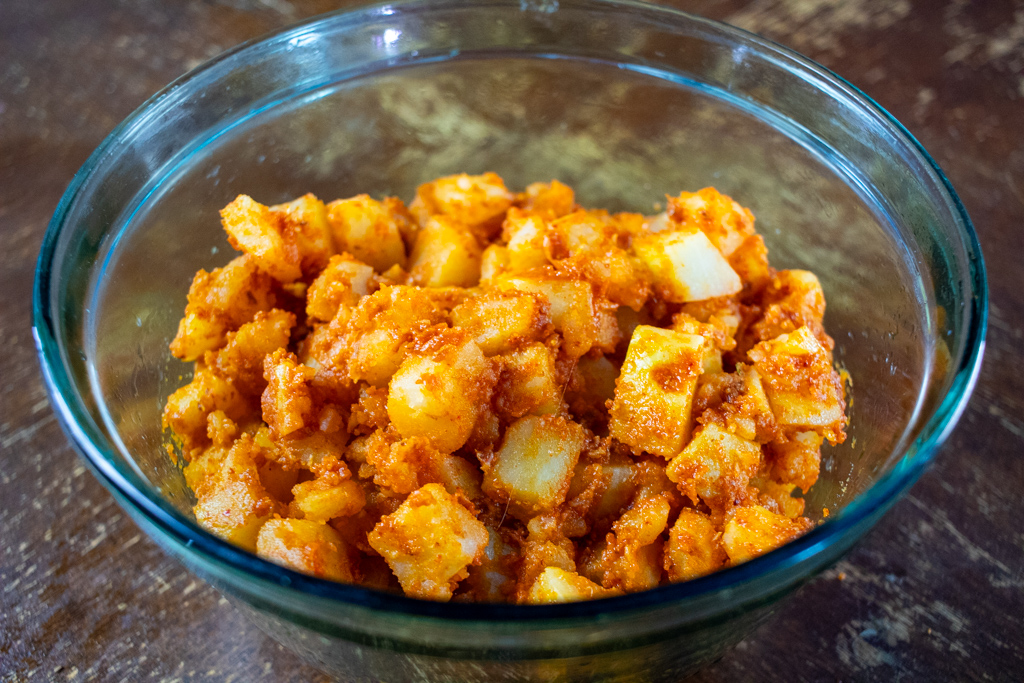
The instructions for assembling the sandwich go like this: Split a fried roll lengthwise and spread a layer of harissa inside
Add the potato salad,
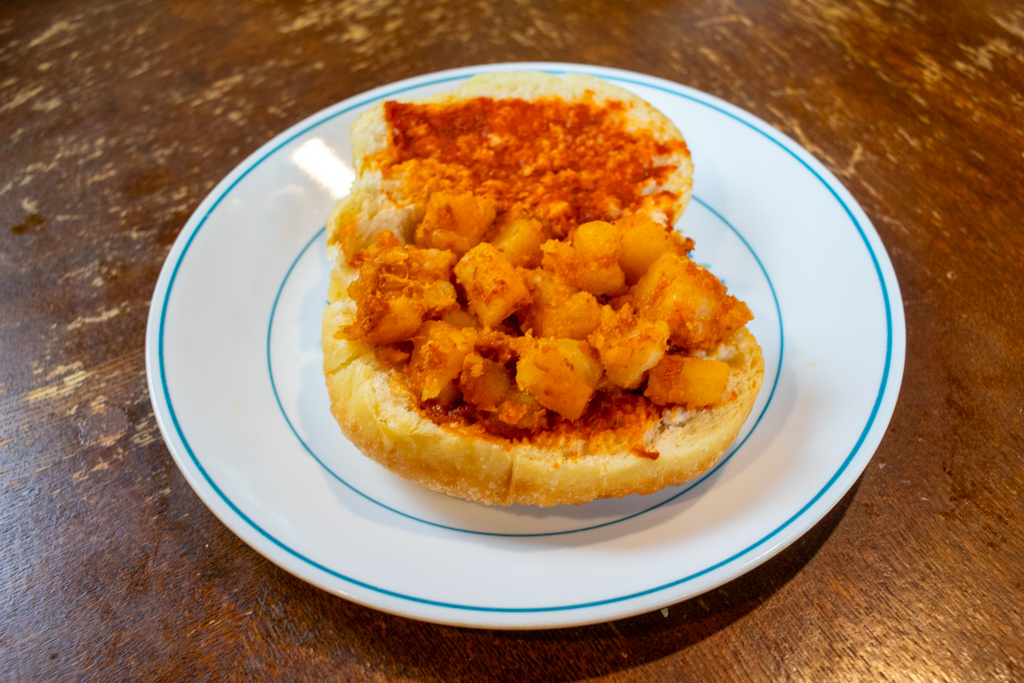
a quarter of a hard-boiled egg, olives,

tuna,
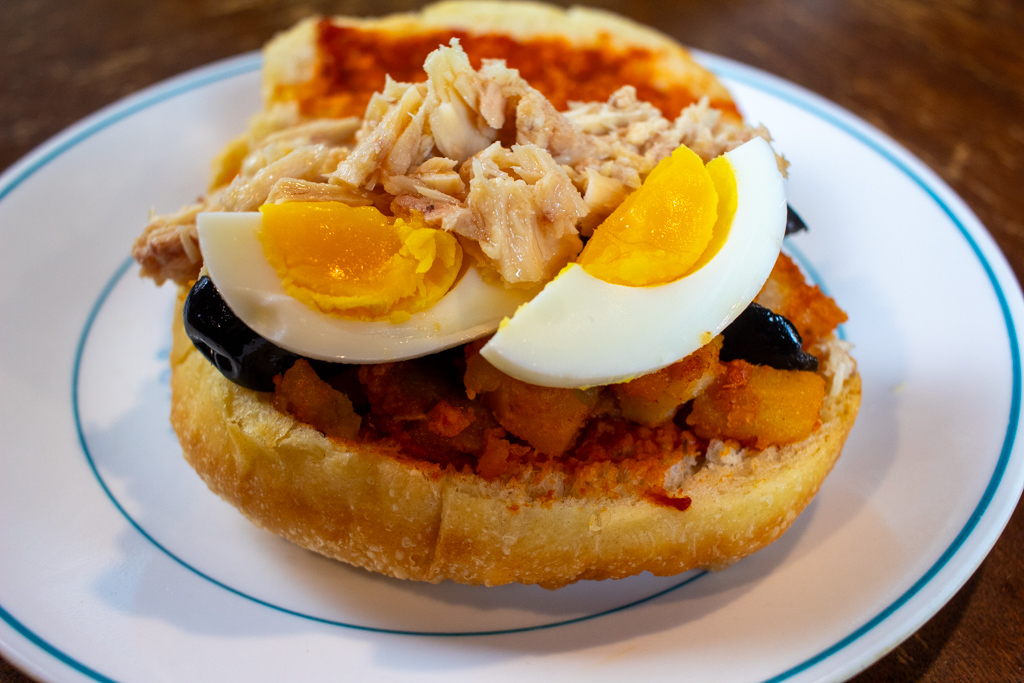
pickled lemon,
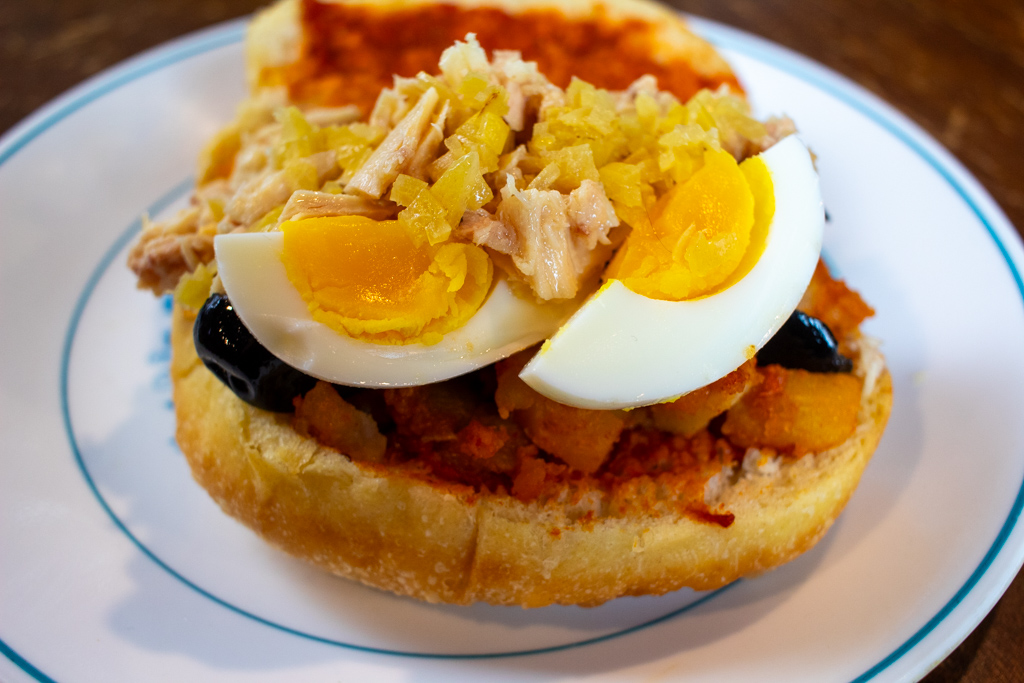
and freshly chopped salad.
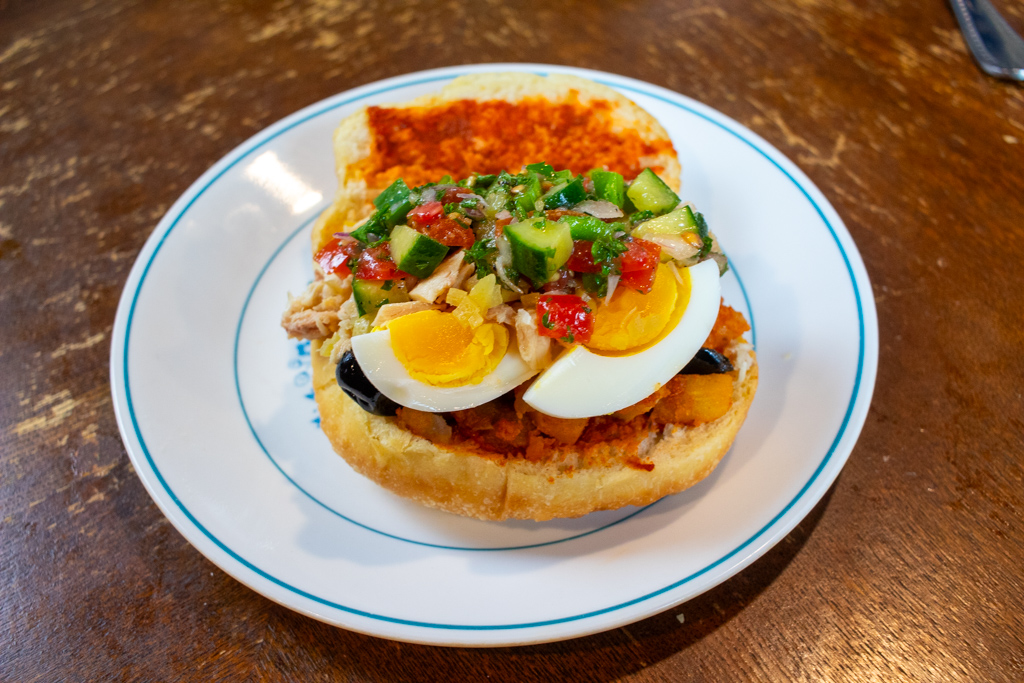
There’s a lot to like about this sandwich. The ground caraway seed in the potato salad has a cooling, almost mint-like flavor, serving to calm the fiery harissa.
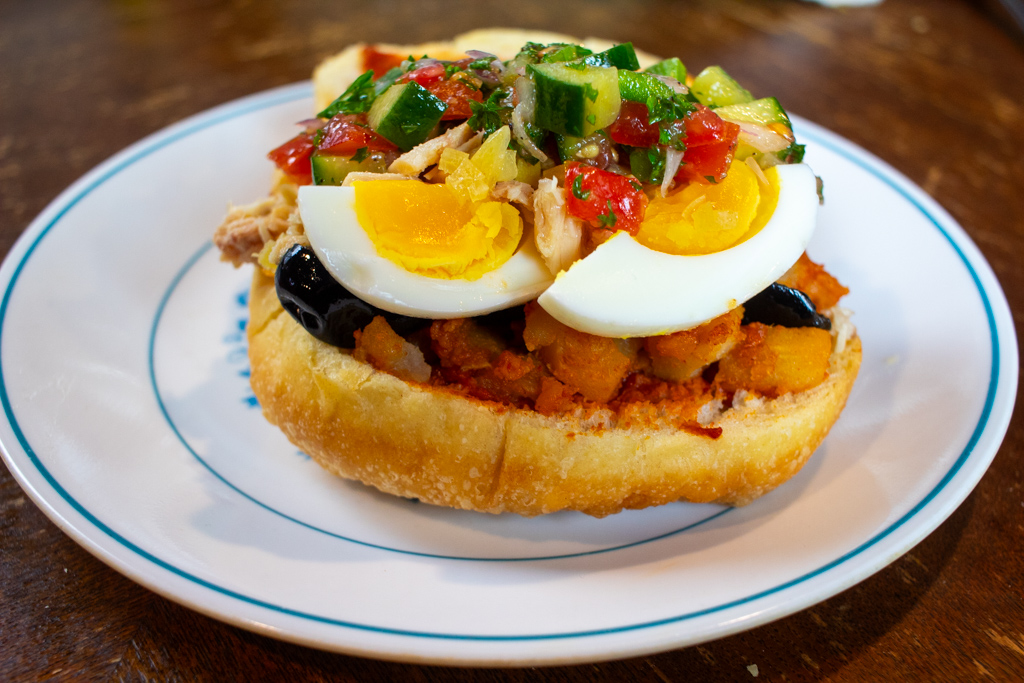
The amount of tuna in the sandwich may seem proportionally somewhat small but the sandwich is quite filling, between the potatoes, and the eggs, and the richness of the fried bread. Yet the tomato and cucumber salad keeps it from feeling too heavy, while the olives and preserved lemon add brightly salty, sour, and bitter notes.
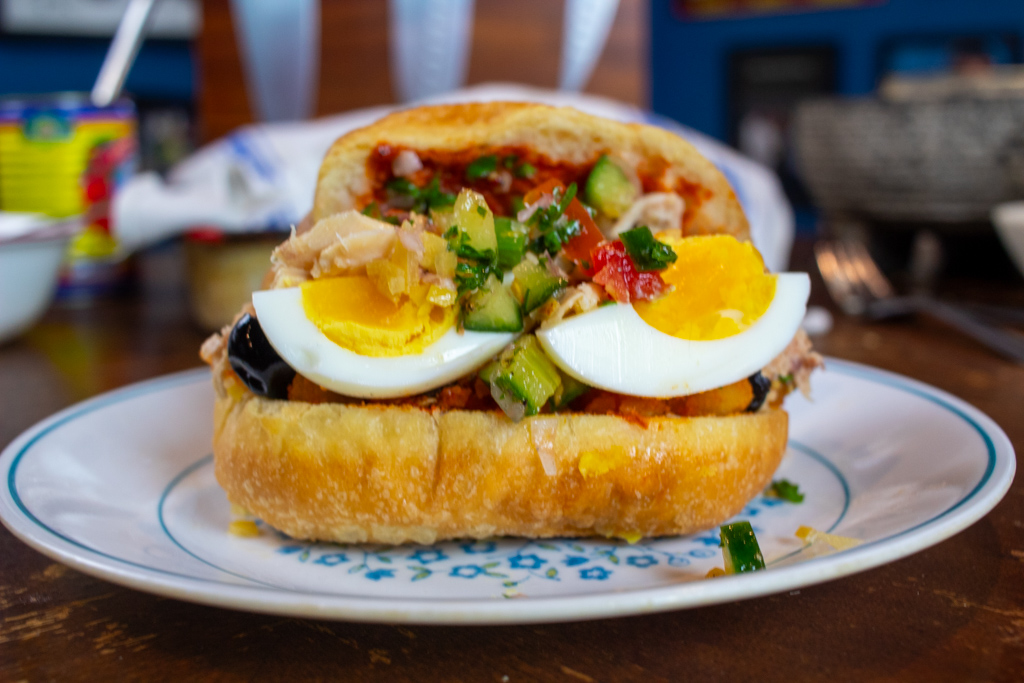
The combination is terrific, and though they may seem snack-sized, one of these Fricassé sandwiches makes a comfortable meal.

On my first version of the sandwich, I forgot to add the boiled egg, but it still turned out great.







I’m not a regular consumer of tuna sandwiches–my tunafish trauma has been detailed elsewbere on the site but these days it’s mostly that I find tuna largely unsatisfying, boring. The Fricassé sandwich is anything but boring.

I like sandwiches.
I like a lot of other things too but sandwiches are pretty great












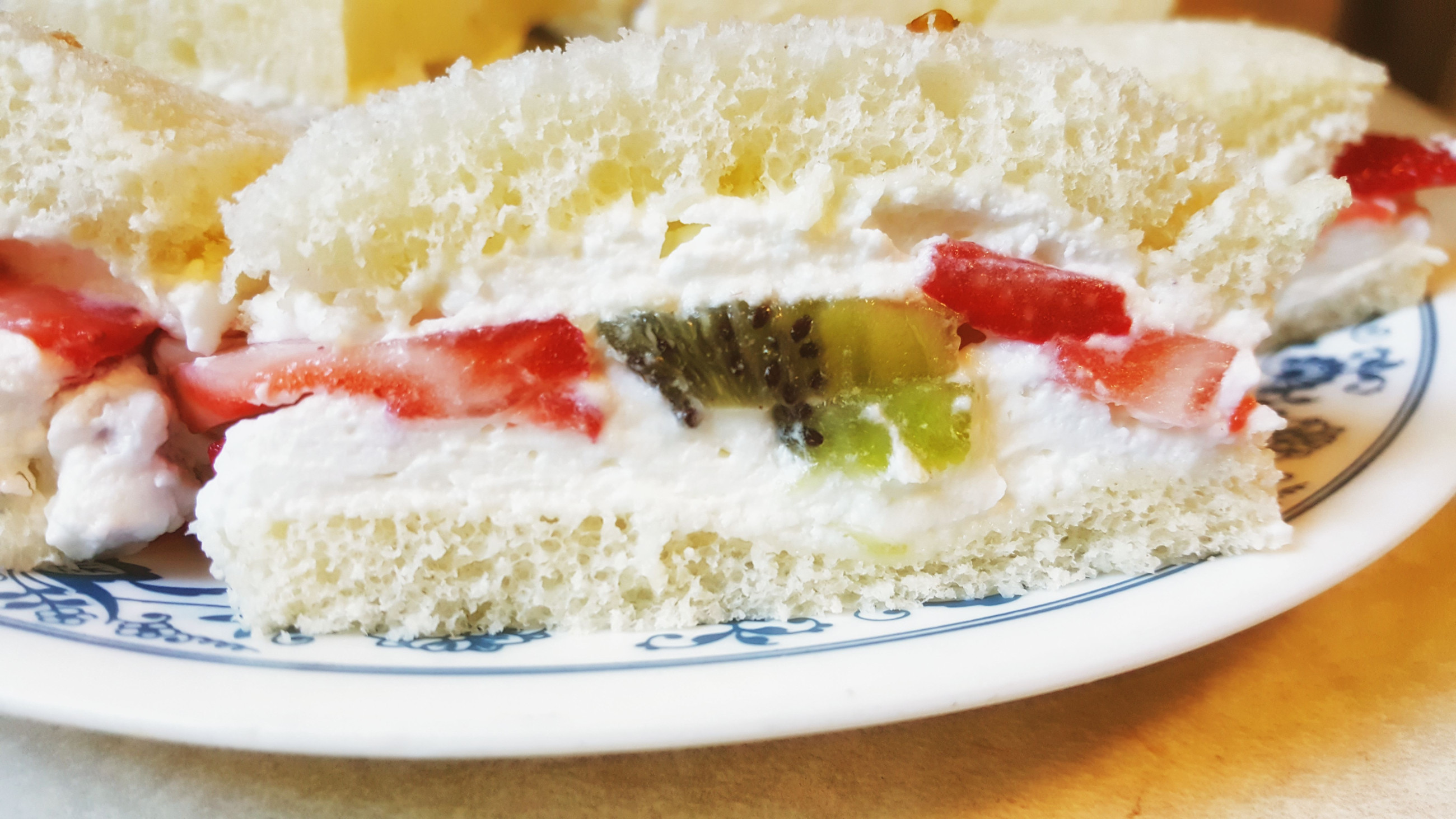
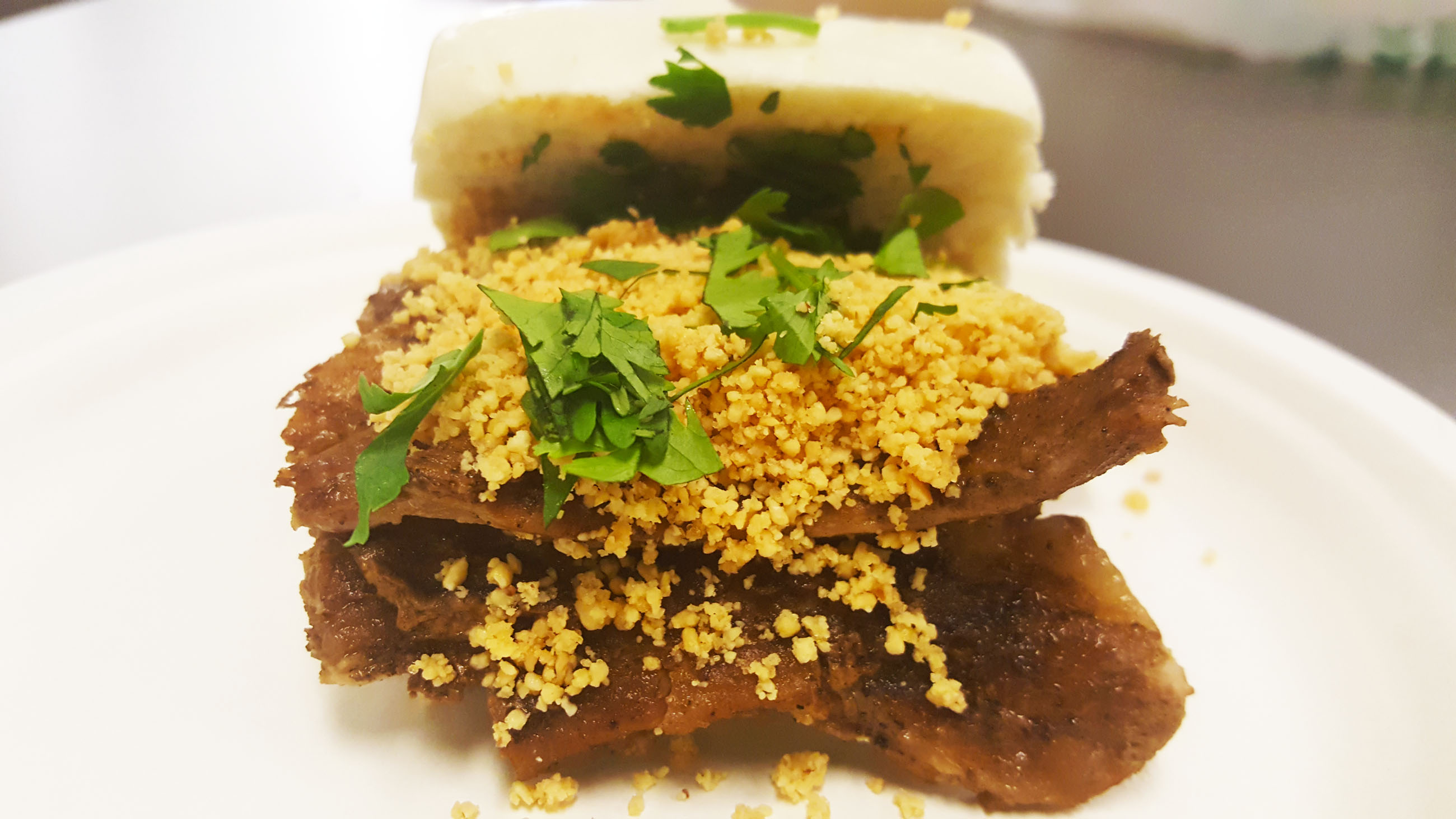
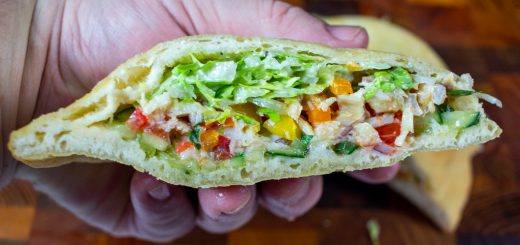






Recent Comments